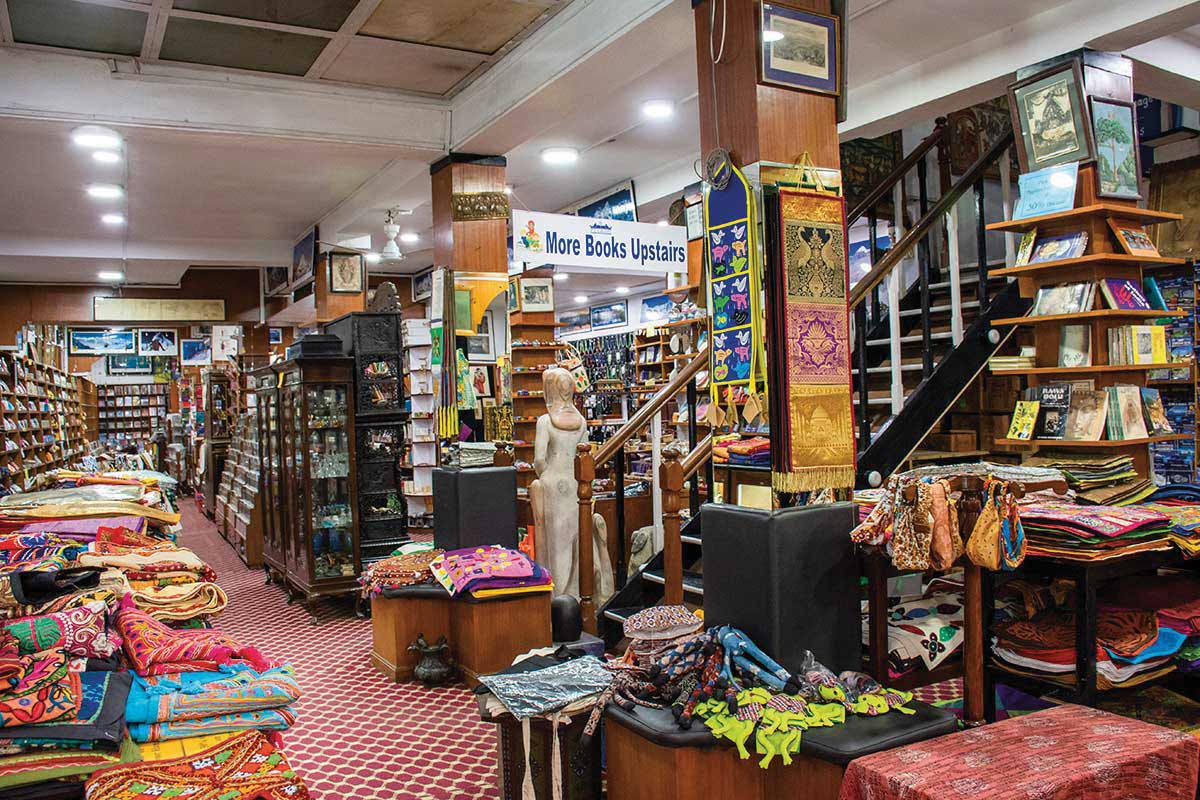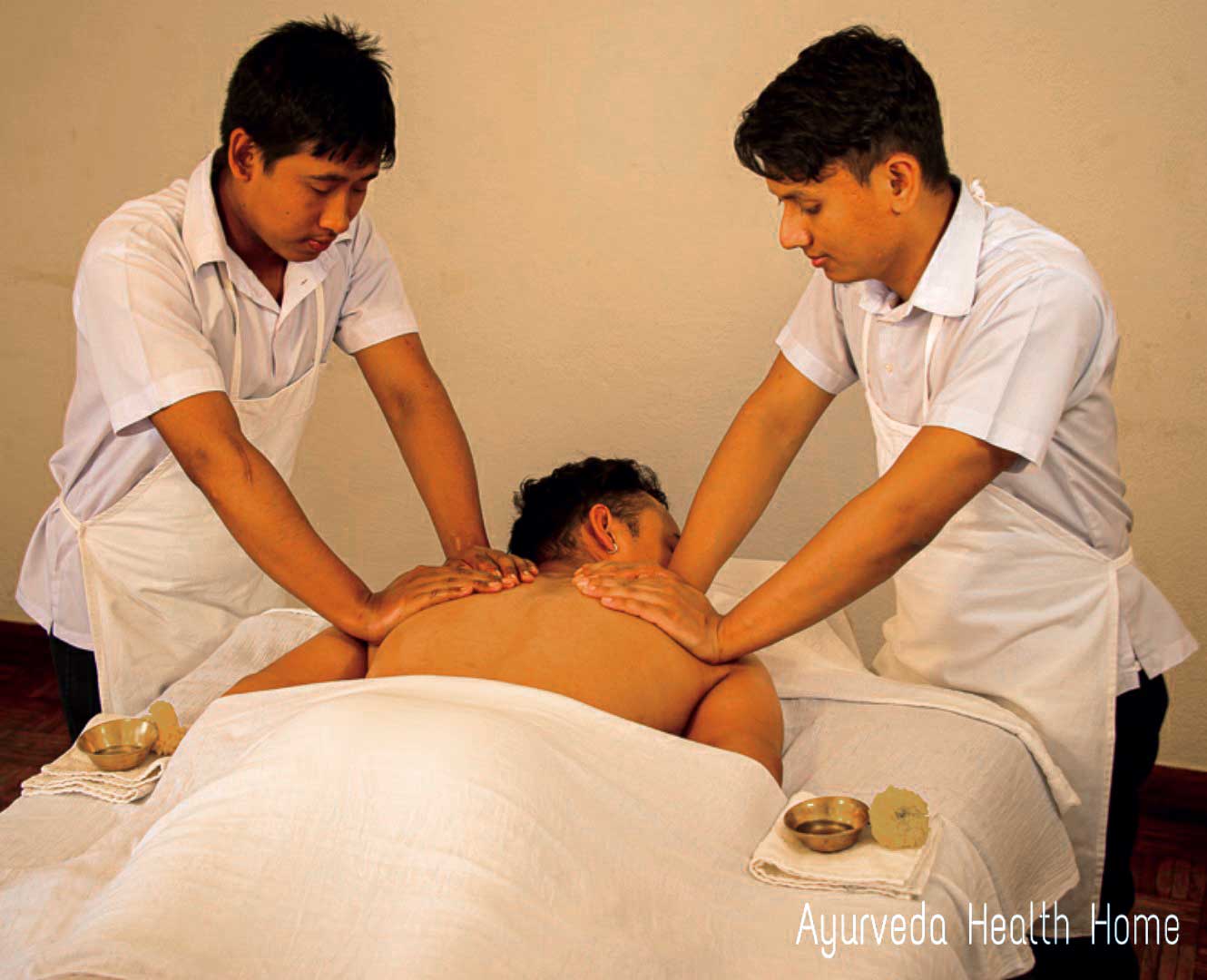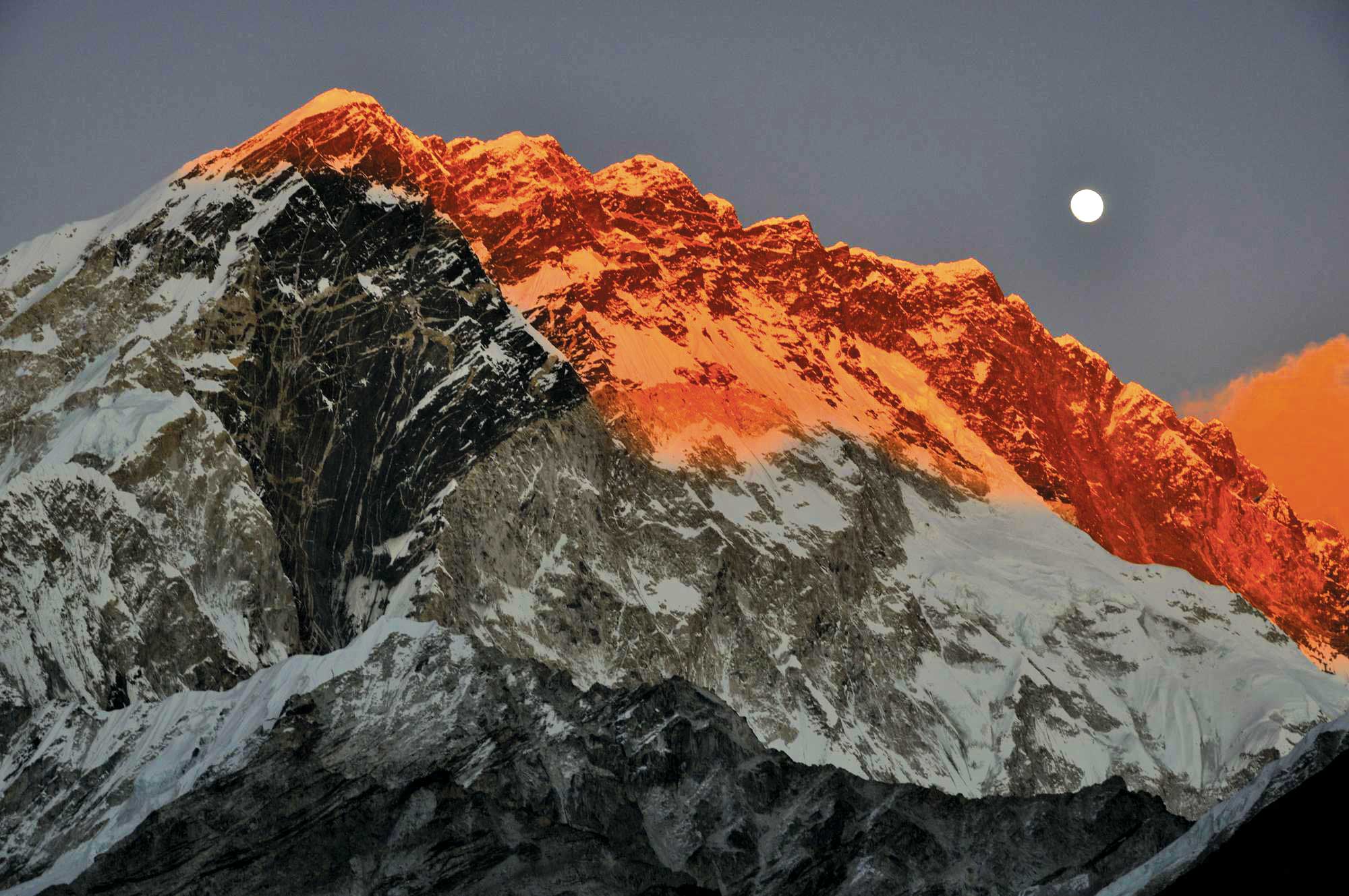Exceptional Experiences at the Top of The World.
Let me walk in front of you so I can check the trail,” my guide said to me, as snow continued to swirl in the cold wind, visibility dropped to no more than a few feet, and we were about to enter a particular ascending stretch about two feet wide with over 1,500 meters drop on the other side. “But if I walk behind you, how will you know if I have fallen?” I asked him, half joking. “That’s true,” he said, quite seriously. As steadily as possible, squinting to both see and keep snowflakes from covering my sight, I walked in front, holding on to the support metal wire nailed onto the cliff.
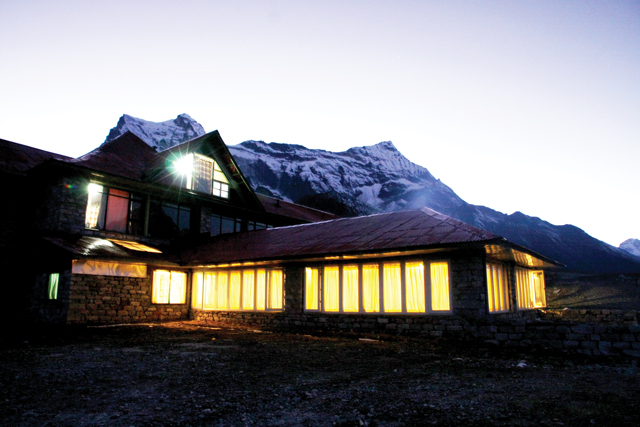
That November morning in 2011, when we left Thame (3,800 m) and headed out for Kongde (4,250 m), the sky was a perfect blue, and the temperature just right. Just as we began our Kongde ascent, the sky turned grey, and soon it was winter in the Himalayas, fog and snow enveloping the mountain landscape. At one point, as we crossed a river, what appeared to be solid ground covered in snow turned out to be thin ice. Fortunately, the water in that section was only ankle deep, and I was determined to get to what Travel and Leisure magazine had defined as the world’s highest resort. Plus, if the five Yeti Mountain Homes—Lukla (2,840 m), Phakding (2,610 m), Monjo (2,840 m), Namche (3,440 m), and Thame—before Kongde were any indications, hot beverages, delicious meals, unprecedented comfort, and exceptional views awaited. Oh, and electrically heated beds, too.
There are only a few well-known mountain resorts in Nepal, and Everest View Hotel in Syangboche was a pioneer. Developed by the Japanese trekker Takashi Miyahara, the hotel opened in 1971. It probably remains the most well-known and busiest mountain hotel in Nepal, and a popular stop for anyone trekking the Everest route. The views in many ways remains unmatched, and it has a rich legacy in the Himalayas.
Across the Khumbu valley from Everest View is a newer addition: Yeti Mountain Home – Kongde.
YMH Kongde opened in March 2005. It sits on an edge of the Kongde mountain at 4,250 meters above sea level. It is also recognized as the highest altitude lodging in the word, and was listed as the Hottest Destinations of 2013 by Travel and Leisure magazine. From YMH Kongde one can see Namche Bazaar across the valley. It is from Namche one goes north-east to go towards Syangboche and Everest, and north-west to go towards Thame. From there, the resort connects to Kongde. The rugged “connection” between Thame and Kongde are as much a part of the experience as the services and quality of the Yeti Mountain Homes themselves.
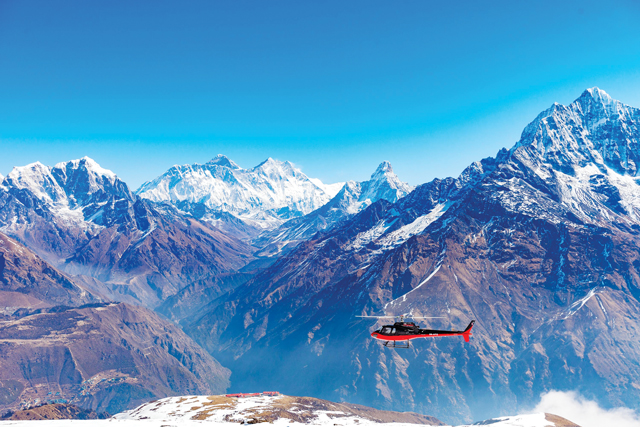
The trails around the Everest area, particularly from Lukla to Namche, and then east towards Syangboche, have villages and a constant flow of people, locals and tourists alike. Even the trail that leads westward to Thame is not much different. What makes the route from Thame to Kongde exceptional is that you do not come across villages, and you seldom meet anyone else unless they too are headed to the resort.
In other words, the Kongde trail that is mountain wild, and quite tricky at times, offers those who are on it the kind of solitude that is impossible to find in the traditional Lukla–Everest routes. Solitude advised with a caveat: walking it alone is not advised.
After visiting Kongde several times by helicopter between 2012 and 2013, I walked to Kongde from Thame again in 2014. The trail itself is only open from April to December. This time, the October weather was as perfect as one expects it to be. It was in this clarity that one witnessed the truly stunning landscape the hike takes you through: from rich canopy of alpine trees, to mountain canyons of boulders and slates, endless heart pounding and vertigo inducing cliffs, and infinite breathtaking expanses. There is also something immensely joyful about crossing streams thousands of feet up in the Himalayas, and soaking up the sun next to a mountain lagoon before making yet another steep ascent, on a hike instead of what one imagines trekking to be like. And the scary climb with a 1,500 meter fall, despite being tricky, actually offered beautiful views. It had taken me 6.5 hours of fast paced marching through the snowstorm in 2011 to reach Kongde from Thame. In 2014, with clearer weather and a leisurely pace, it took an hour more.
There is an easier way to get to Kongde too: an approximately two minute helicopter trip from Lukla! It’s a short ride, but a gorgeous one nevertheless. An extended version, which includes a helicopter ride from Kathmandu and a mountain tour of about 15–20 minutes before landing at Kongde, is simply exceptional. For guests who are pressed for time, but not for cash, it is actually a great option. In fact, the resort has even hosted large-scale events for guests who fly in for breakfast, spend about an hour, and fly back down. In my last visit there, in autumn 2015, the resort itself was under post-quake renovation. But it was still hosting guests for Everest for Breakfast in its outdoor patio.
Inside, the common lounge is kept warm by an efficient wood stove, as staff readily serve unlimited warm beverages in between full three-course meals. Outside, an obstructed and unique view of the Himalayas: mount Khumbila in the foreground with Namche in its lap, and Everest in the background, with Ama Dablan in the mid-right.
Logistics of managing and operating a full service resort in a location like this is not easy. The resort has built a small greenhouse that produces quite a lot of vegetables. Otherwise, it often relies on chartering helicopter for all supplies delivery from Lukla, or makes the most of it when guests arrive in one. The property is powered by a mix of on-site solar power system and petrol generator, as there is no power grid there. And the trails leading to Kongde from both Phakding and Thame are closed from December to April due to snow.
After the April 2015 quake severely damaged most of the building’s walls and other parts, Yeti Mountain Home had no option but rebuild. It reopened this month, ready to pick up where it left off and give the guests a truly memorable world-class mountain experience, with their head in the clouds, up in the Himalayas.


